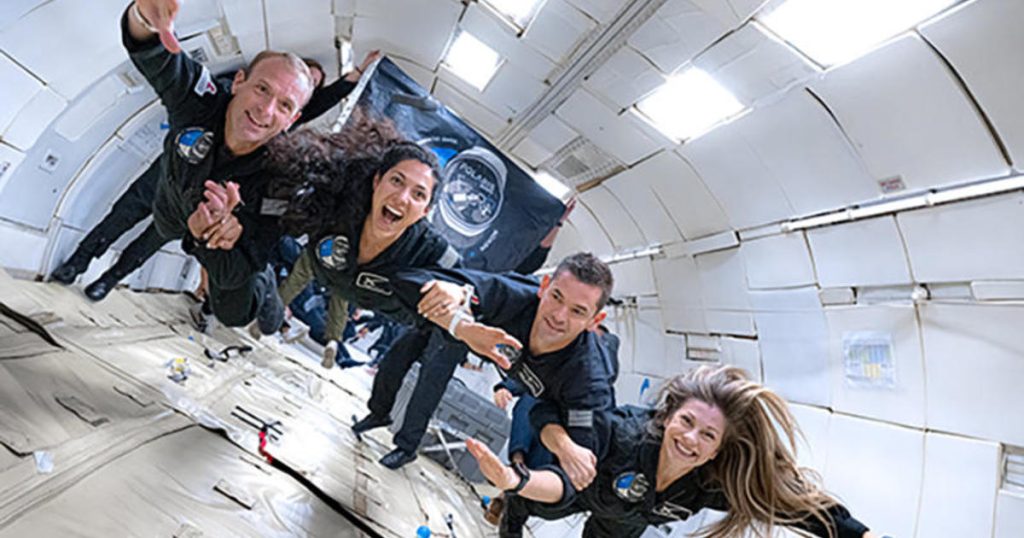Jared Isaacman, a billionaire adventurer and philanthropist, who has previously chartered a commercial flight to orbit aboard a SpaceX Crew Dragon in 2021, is planning an even more daring flight. This upcoming mission will feature the first commercial spacewalks. The crew, including Isaacman and SpaceX crew trainer Sarah Gillis, will perform spacewalks just outside the ship’s forward hatch to test innovative SpaceX-designed suits. Their goal is to develop a new generation of lower-cost, more flexible spacesuits for future moon and Mars missions.
The Polaris Dawn flight will be unique in that it will carry Isaacman and his crewmates to a record high altitude of 870 miles. This is over 600 miles farther out than the International Space Station and farther than any astronauts have flown since the Apollo moon missions. In addition to the spacewalks, the crew will test high-tech laser communications links with Earth, conduct 36 biomedical experiments, and study various aspects of spaceflight such as changes in internal eyeball pressure, space motion sickness, and balance. The mission is also a fundraiser for St. Jude Children’s Research Hospital.
The crew will launch aboard a Falcon 9 rocket from Kennedy Space Center and reach an initial orbit with 745 miles at its highest point. With the cabin vented down to vacuum, the crew will undergo a pre-breathe protocol to prevent the bends before the spacewalk. SpaceX has made modifications to the Crew Dragon to support the spacewalks, including adding more oxygen, environmental sensing systems, and a nitrogen re-pressurization system. The crew will spend approximately 15 minutes each outside the ship, connected by safety tethers and umbilicals.
The suits worn during the spacewalk feature advanced technology, including a heads-up display, thermal insulation, and redundancy in oxygen supply. While outside, Isaacman and Gillis will test the suits’ comfort, flexibility, and performance under space conditions. The mission marks the first spacewalk by a commercial company and the farthest humans have traveled from Earth in over half a century. The crew’s experience in the high-radiation Van Allen belts will also provide valuable data.
After the spacewalk, the crew will test a new laser link with SpaceX’s Starlink satellites. The mission will conclude with more research experiments before re-entry and splashdown off the coast of Florida. The pace of innovation at SpaceX, as described by former NASA director Bill Gerstenmaier, is akin to the early days of Apollo missions, pushing boundaries to explore new frontiers. Isaacman’s vision for human spaceflight is to advance scientific knowledge and make space more accessible to a wider range of people. The Polaris Dawn mission is just the first of three planned by Isaacman in cooperation with Elon Musk and SpaceX.


